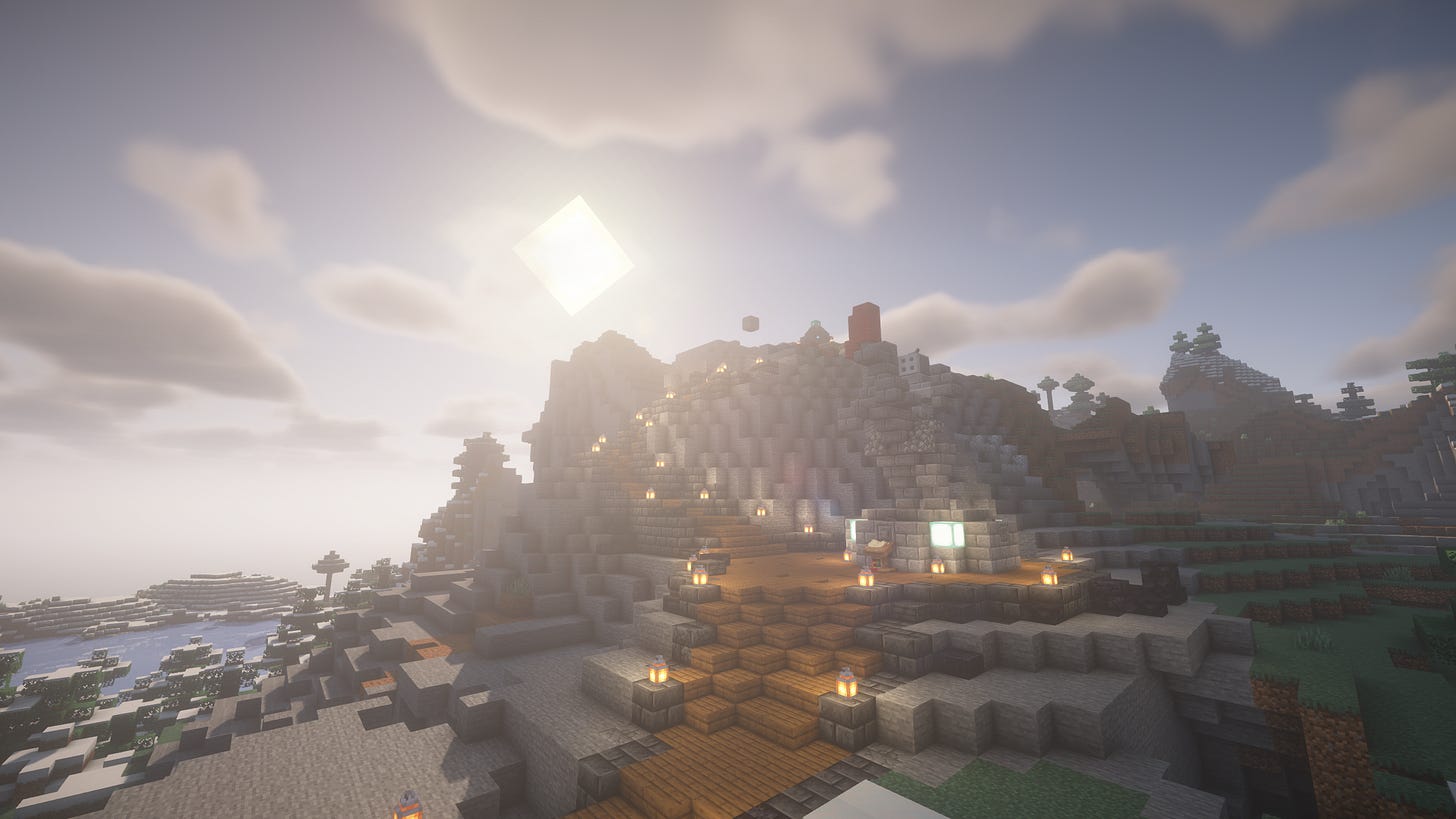Minecraft serves as a model of sustainability in a volatile industry
Minecraft's slow and steady update schedule should be the goal for live-service games
My friend group went through its two-week Minecraft phase a few months ago.
We all hopped back onto our Realms server and grinded out a few more progression milestones. I upgraded all my gear, a friend killed the ender dragon, we all nabbed some elytra.
As soon as it started, it was over. The two-week Minecraft phase had passed.
Except it wasn’t over for me — I decided to stick around.
For anyone who may have been in a coma for the past 20 years, Minecraft is an incredibly popular voxel-based (meaning: everything is made of blocks) fantasy sandbox game. You can mine, craft tools, slay dragons and create whatever you’d like.
I’ve been playing Minecraft since I was 12, during the game’s Alpha released in 2010 (a date I couldn’t remember and found here, of all places).
When I was a kid, I loved fighting mobs and building castles. I’d build structures and make up an intricate backstory for them, imagining them as remnants of some long-past battle between good and evil (or something like that — IDK man, I was 12).
As I got older, I found I enjoyed different parts of the game. In my younger days, I found caving and exploring to be a harrowing experience — far too many possibilities to lose my hard earned loot. In my teen years, I found it thrilling — Minecraft’s procedurally-generated worlds offered a unique dungeon-delving experience that was never the same thing twice.

The game continued to grow alongside me. Although it’s not a live-service game per se, Minecraft has received steady content updates throughout the years. New content combined with the game’s accessible vibe and broad appeal have given the game an incredible amount of staying power in an industry that’s becoming more and more tumultuous.
While the Minecraft sandbox has always offered players a huge variety of playstyles, the amount of ways the game can be played today is staggeringly huge thanks consistent updates throughout the years.
It’s one of the things that makes the game so appealing to me. While many games with this long of a lifespan tend to feel like a Frankenstein’s monster of various updates stuck together (looking at you, GTA Online), Minecraft’s vision has remained shockingly cohesive.
Fans often joke about the frequency of updates to the game, but Mojang’s slow-and-steady approach has meant updates to the game rarely feel out of place. It’s obvious that a lot of care goes into intentionally integrating new content into the games existing systems, no matter how big or small.

Mojang’s updates tend to bring fewer, highly polished features. Updates with large overhauls or tons of new content are rare (although they do exist). Instead, they typically feature a few brand new pieces of content alongside tweaks and additions to old content.
Let’s take a look at Minecraft’s newest 1.20 update that dropped on June 7, exactly one year after Minecraft’s last major update. It adds a few completely new pieces of content: a new cherry grove biome, new passive mob, and a new archaeology mechanic. Alongside those additions, it revisits several existing features: bamboo got new blocks and crafting recipes, signs and bookshelves both received new options, and archaeology is integrated into two existing structures that were in need of some TLC. Desert wells finally have a purpose after 11 years!
That brings us to today. As an adult, the game is still fun even without the nostalgia factor. It’s a game that many have grown up with — and clearly still enjoy. After more than a decade of games trying to mimic Minecraft’s success, no other game lets you mine, craft or build in quite the same way.

The game has changed over the years, and so have I. While the game’s combat mechanics have received a few tweaks, it still basically boils down to clicking on enemies while walking backwards. While I think the mechanics are perfectly serviceable for what the game is trying to do, I don’t find them as engaging as I did when I was younger.
However, I find myself drawn to other aspects of the game. Redstone contraptions that once confounded me as a 12-year-old are now fun to build. I find myself building various structures dedicated to automatically farming mobs or items. I’m especially fascinated by builds that utilize several of the games less obvious mechanics to create a high efficiency farm, like this gold farm I recreated on my realm or this super-efficient wither skeleton skull farm.
The slow and steady updates over several years have left the game with a robust sandbox for players to explore, as opposed to dangling a different set of shiny keys for players to bat around each week. I hope more games will emulate Minecraft’s release model and step away from live-service and battle-pass models.





